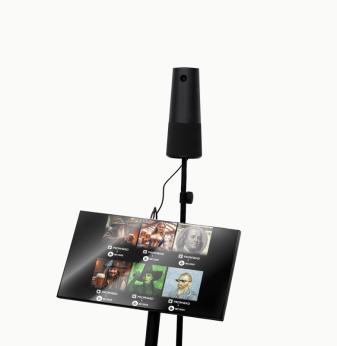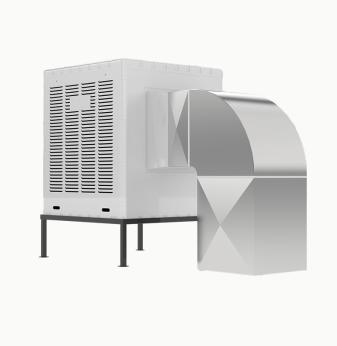How to Choose the Best Edge AI Platform: Jetson, Kria, Coral and Others

In 2025, selecting the right embedded AI hardware platform is crucial for product success. OEMs and engineering teams building edge devices—from autonomous robots and industrial cameras to smart sensors—must balance performance, power, ecosystem support, and compliance. Platforms like NVIDIA Jetson, Xilinx Kria, Google Coral, and others compete in different niches. This article compares them to help you make an informed choice.
Why hardware choice matters for edge AI projects
Edge devices must deliver real-time inference under size, power, and latency constraints. Speed alone isn’t enough; maintainability, integration, security, and certification also matter. The right platform empowers teams to deploy models more reliably and scale products faster.
Overview of leading platforms
NVIDIA Jetson (AGX Orin, Xavier NX, Orin Nano)
Jetson provides high GPU acceleration for compute-intensive models. For example, the AGX Orin delivers up to 275 TOPS and can process 4K video inference at realtime speeds, depending on optimization. Jetson excels at complex workloads but consumes 15–60 W and is relatively expensive.
Google Coral Dev Board / Edge TPU
Coral Edge TPU handles quantized TFLite models at very low power (2–4 W). In test setups, Coral boards achieved real-time inference on MobileNet V2 with under 50 ms latency at full 400 fps image streams. Ideal for battery-powered vision IoT devices.
Xilinx Kria (KV260 Vision AI module & SOM platforms)
Kria combines FPGA reconfiguration with CPU cores to build low-latency pipelines. In industrial inspection deployments, Kria modules processed four camera streams at under 20 ms latency, drawing <10 W while incorporating custom filtering logic in FPGA fabric.
Other platforms worth noting
There are alternatives like Qualcomm Robotics RB5 SoCs or Raspberry Pi 5 paired with AI accelerators (e.g. Coral or NCS2). These may cost under $200–$300 and offer mixed performance—appropriate for rapid prototyping or early-stage pilots.
Latest benchmarking insights
Independent benchmarking in 2025 showed Coral devices repeatedly outperformed others on lightweight models like MobileNet and EfficientNet, achieving faster average inference times. Jetson led in versatility, especially for ResNet or full-precision model inference. Kria wasn’t included in those benchmarks, but remains competitive in tailored vision processing environments thanks to hardware-level custom pipelines.
Core comparison criteria
Performance & throughput
- Jetson: yes for full-scale GPU inference
- Coral: best efficiency for quantized models
- Kria: custom pipelines with predictable latency
Power consumption
- Coral < 4 W
- Kria typically < 10 W
- Jetson ranges from 5 W to 60 W
Development ecosystem
- Jetson: full AI SDK + CUDA support
- Coral: TFLite tooling, streamlined dev setup
- Kria: FPGA/RTL toolchain and custom IP support
Certification & industrial readiness
Jetson and Coral are product-ready; Kria excels in low-latency, industrial automation use cases. All need integration work for OTA updates, secure boot, CRA or ISO frameworks.
Cost & availability
- Coral: ~$130–150 per Dev Board
- Jetson Nano: entry-level ~$120; Orin modules range $500–1000+
- Kria: enterprise pricing, variable by configuration
Community & support
- Jetson: large developer base and long-term support
- Coral: backed by Google’s AI ecosystem
- Kria: smaller but technically focused FPGA/raw AI userbase
Choosing by use case
- Robotics/autonomous systems: Jetson AGX Orin or Xavier NX
- Low-power, battery image inference: Coral Dev Board or USB Edge TPU
- Real-time industrial vision pipelines: Kria KV260 or custom SOM boards
- Prototyping/projects on budget: Raspberry Pi + accelerator (Coral or Jetson Nano)
Evaluation checklist for teams
- Define model architecture and framework support
- Check quantization requirements (e.g. INT8 for Coral)
- Power budget (battery vs mains)
- Required sensors and connectivity
- Certification or security needs (OTA, secure boot, CRA)
- Hardware cost and availability
Often, hybrid combinations—Jetson handling compute logic, Coral for low-power sensing, Kria for camera pipelines—achieve the best balance.

Promwad case study
Promwad developed a defect inspection system using Kria KV260 with FPGA logic. It processed four camera feeds with sub‑20 ms latency and stayed under 10 W. Other platforms were tested: Coral hardware was accurate, but latency and neural net size limited sophistication; Jetson variants exceeded thermal limits in the enclosure design.
FAQs (Targeting long-tail questions)
- Which platform is best for low-power vision? Coral Dev Board, due to Edge TPU efficiency.
- Is Jetson worth it for Robotic use cases? Yes, for GPU-intensive models and flexibility.
- Can Kria help with ultra-low latency vision pipelines? Yes. Its FPGA handles pipelined processing deterministically.
Summary comparison
| Platform | Strengths | Limitations | Best use case |
| Jetson AGX Orin | High performance, robust ecosystem | Higher power and cost | Advanced robotics and AI systems |
| Coral Dev Board | Extreme efficiency on quantized models | Limited inference scope | Low-power sensors and vision systems |
| Kria KV260 | Deterministic processing, custom pipelines | FPGA complexity, higher BOM cost | Industrial vision and edge robotics |
Final advice
Start by defining your model type, power constraints, latency requirements, and certification needs. Prototype on multiple platforms to validate real-world performance. In many cases, a hybrid design best balances efficiency and flexibility. Edge AI hardware requires deep alignment between model architecture, deployment constraints, and lifecycle support.
If you’d like support choosing or integrating a platform for your embedded edge AI project, Promwad can assist with both evaluation and optimization.
Our Case Studies








